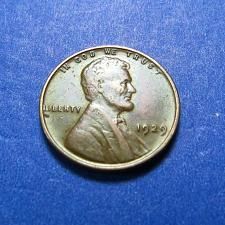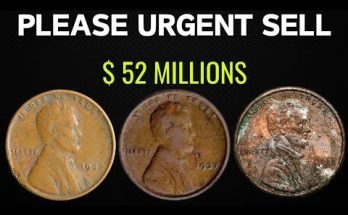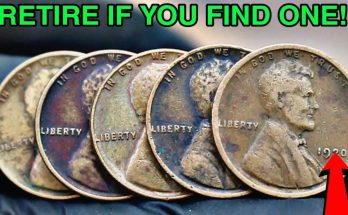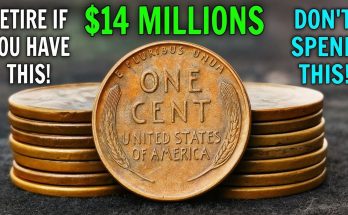Coin Value Price Chart for Lincoln Wheat Cent 1C. Lookup Coin values for Good, Very Good, Fine, Very Fine, Brilliant Uncirculated & Proof conditions and MS grade. How much Lincoln Wheat Cent are worth. Buy & Sell. Coins for sale for Lincoln Wheat Cent type items.
A Lincoln Wheat Cent, often called a “wheat penny,” is a one-cent coin minted by the United States from 1909 to 1958. This iconic coin is a foundational piece for many collectors, blending a rich historical background with a wide range of values from a few cents to thousands of dollars.
A Brief History and Design
The Lincoln Wheat Cent was first introduced in 1909 to celebrate the 100th anniversary of Abraham Lincoln’s birth. This was a groundbreaking moment in U.S. coinage, as it was the first time a portrait of a president appeared on a circulating coin. The design was created by Victor David Brenner, a Lithuanian-born sculptor who had previously created a commemorative plaque of Lincoln that caught the eye of President Theodore Roosevelt.
The coin’s design features two distinct sides:
- Obverse (Heads): The front of the coin showcases a detailed portrait of Abraham Lincoln, facing right. The inscriptions “IN GOD WE TRUST” are placed above his head, “LIBERTY” is to his left, and the date is to his right. A small mintmark (D for Denver or S for San Francisco) may appear below the date. Coins from the Philadelphia Mint have no mintmark.
- Reverse (Tails): The back of the coin is what gives the series its common name. It features two stylized stalks of durum wheat framing the central inscriptions “ONE CENT” and “UNITED STATES OF AMERICA.” The national motto “E PLURIBUS UNUM” is inscribed above.
The design was not without its controversy. The initial 1909 release included Brenner’s full initials, “V.D.B.,” prominently on the reverse, which led to a public outcry about an artist’s signature being too large. The initials were quickly removed, creating a highly sought-after 1909-S VDB variety with a low mintage of just 484,000. In 1918, a smaller version of Brenner’s initials was permanently restored on the obverse, under Lincoln’s shoulder.
Key Dates, Varieties, and Errors
While most Lincoln Wheat Cents are common and hold modest value, certain dates, mintmarks, and varieties can be worth a significant amount to collectors.
- 1909-S VDB: As mentioned, this is the most famous and valuable coin in the series due to its limited mintage and the controversy surrounding Brenner’s initials.
- 1914-D: A low-mintage key date with just over one million coins produced. This coin is particularly rare in high grades.
- 1922 No D: An error coin from the Denver Mint where the “D” mintmark is completely missing or very weak due to a worn or heavily polished die.
- 1931-S: A key date with the second-lowest mintage of the series, making it a valuable find.
- 1955 Doubled Die Obverse: A visually dramatic and well-known error where the coin’s date and lettering appear noticeably doubled.
Understanding Coin Values and Grading
The value of a Lincoln Wheat Cent is determined by several factors: date, mintmark, condition, and any specific varieties or errors. Common-date circulated coins can be purchased for less than a dollar, while a rare key date in excellent condition can command thousands.
Grading is a crucial aspect of determining a coin’s value. It refers to a coin’s condition and preservation. The Sheldon coin grading scale is used, ranging from Poor (P-1) to Mint State (MS-70). For Lincoln Cents, graders also assign a color designation based on the coin’s original copper luster: Red (RD) for coins with at least 95% of their original red color, Red-Brown (RB) for a mix, and Brown (BN) for those that have toned to a dark color.
To assess a coin’s grade, collectors look at key points of the design for signs of wear. For a Lincoln Wheat Cent, these include the high points of Lincoln’s cheek, jaw, and hair, as well as the lines within the wheat stalks on the reverse. A coin with sharp, well-defined details will always be more valuable than one that is worn or damaged.
Whether you’re a seasoned numismatist or a casual enthusiast, the Lincoln Wheat Cent offers a fascinating gateway into the world of coin collecting. Its historical significance, iconic design, and the thrilling hunt for rare varieties make it a beloved American classic.



